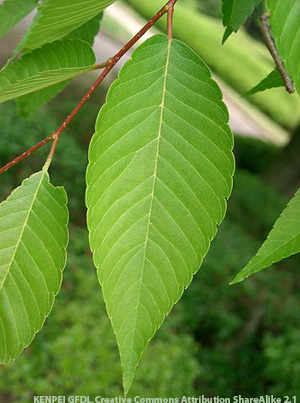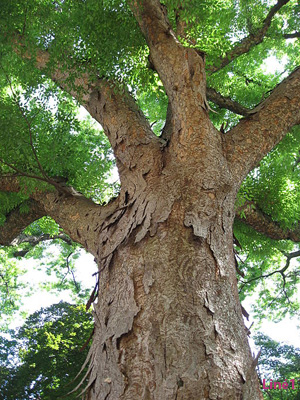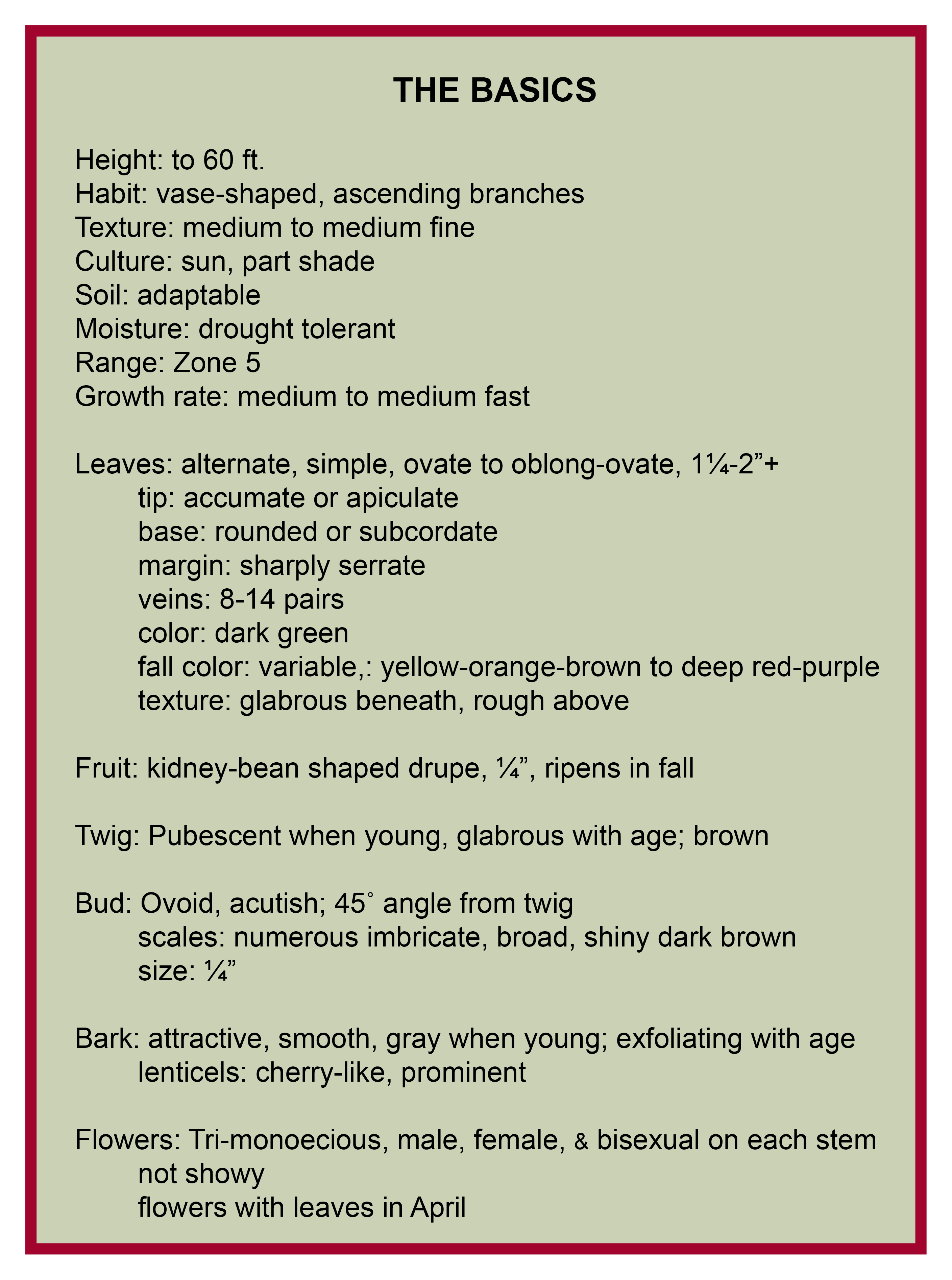Spotlight Plants
- Parrotia persica , Persian Ironwood
- Populus smithii , Hybrid Aspen ( Populus grandidenta tremuloides )
- Zelkova serrata , Japanese Zelkova
Zelkova serrata (Thunb.) Makino
Japanese Zelkova, Keaki
Japanese: 欅 (ケヤキ) keyaki /槻 (ツキ) tsuki ; Chinese: 榉树/櫸樹 jǔshù ; Korean: 느티나무 neutinamu ) Genus name from the Georgian: ძელქვა ( dzelkva ), ძელ dzel meaning "bar"+ ქვა kva meaning "rock".
Plant Authors: (Thunb.) Makino
(In botanical nomenclature, author citation refers to citing the person or group of people who validly published a botanical name, i.e. who first published the name while fulfilling the formal requirements as specified by the International Code of Nomenclature, ICN.)
In 1903 Dr. Tomitaro Makina published the accepted name, Zelkova serrata , for the first time in The Botanical Magazine (Shokubutsugaku zasshi) Tokyo: Tokyo Botanical Society 17, page 13, "Observations on the Flora of Japan"
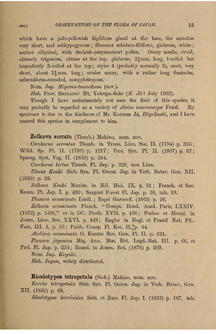
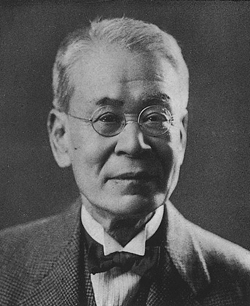
Peter Thunberg had first published the plant under the name Corchorus serratus in The Transactions of the Linnean Society of London 2 (1794), page 335, "Botanical Observations on the Flora Japonica."
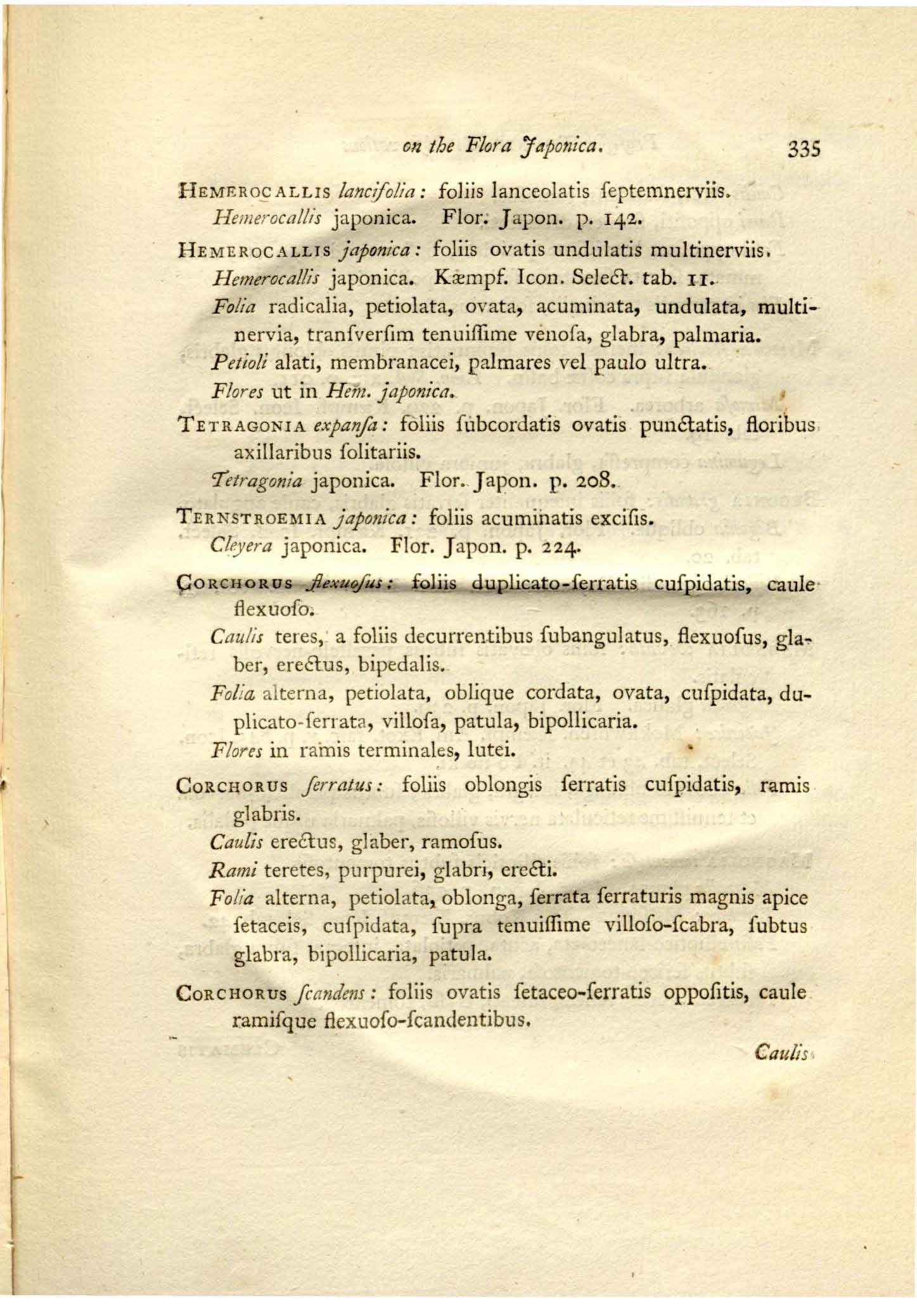
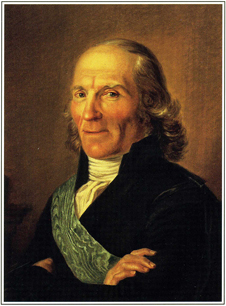
W ith the advent of Dutch Elm disease and the subsequent destruction of much of the country's urban canopy, especially the tree-lined streets of America, Zelkova serrata (Japanese Zelkova) has gained favor as a more than adequate elm substitute in the past few decades. While perhaps not possessing the iconic grandeur of the American Elm, Zelkova serrata has characteristics that make it a worthy landscape shade tree.
Zelkova serrata is one of six species in the genus. Three species are native to Europe or western Asia and three, including Z. serrata , are native to East Asia. As Susyn Andrews writes, "Identification of the taxa is not easy and has been made more difficult by errors and contradictions in the literature." While we know that Z. serrata grows in Kyushu, Shikoku, and Honshu provinces in Japan, as well as in southern Korea and Taiwan, there is some doubt as to whether the specimens growing in China are native or cultivated plants.
The tree was introduced in Europe around 1830 when Philipp von Siebold planted one at the Hortus Botanicus in Leiden , the Netherlands. From the Hortus Botanicus web site:
The Japanese garden in the Hortus is the legacy of a man who was not allowed to leave his island: German doctor Philipp von Siebold, in Dutch service and seconded to the artificial island Deshima. His servants collected plants from the Japanese mainland for his goats. Von Siebold dried and studied these plants, but was also a keen collector of live plants, such as hortensias and wisterias.
Thirty years later, J. G. Veitch (of Veitchi Fir fame) introduced Zelkova serrata to England by sending seeds from Japan. Also in 1861, George Rogers Hall, a doctor living in Japan, shipped live plants to the United States in Wardian cases , successfully introding Z. serrata here. (For an excellent article on the history of Asian plant exploration and introduction in general see Exploration and Introduction of Ornamental and Landscape Plants from Eastern Asia by Stephen A. Spongberg.)
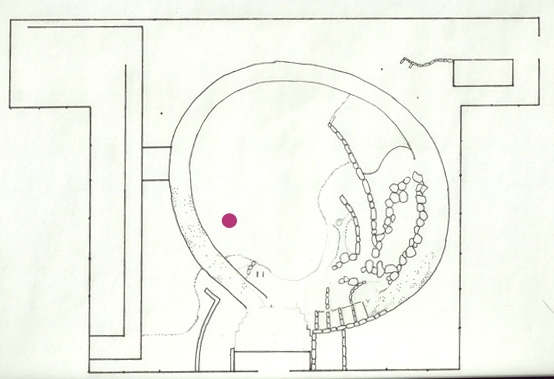
Where to find Zelkova serrata in Keim Courtyard
(You can also find a specimen of the cultivar 'Green Vase' at the southeast corner of the Dairy Store/south end of the Fleming Slope in Maxwell Arboretum as well as a mature speciment growing between the East Campus Student Union and Forestry Hall.)
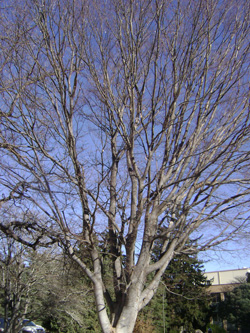
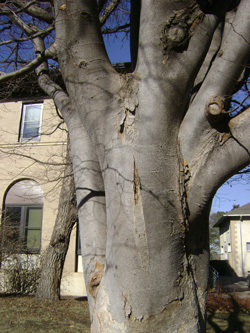
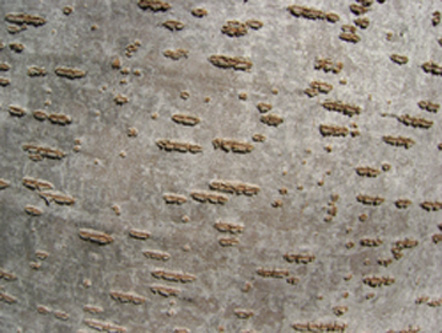
These three images show the mature form, branching, and bark of the specimen south of Forestry Hall
Here's a great overview of the tree excerpted from Zelkova — an ancient tree: Global status and conservation action
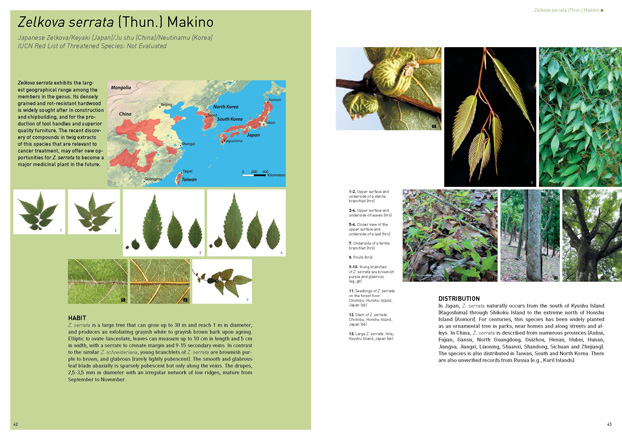
PLANTING THE Zelkova serrata IN KEIM COURTYARD
September 14, 2010


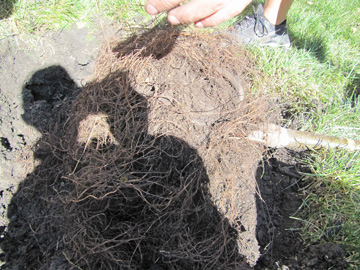
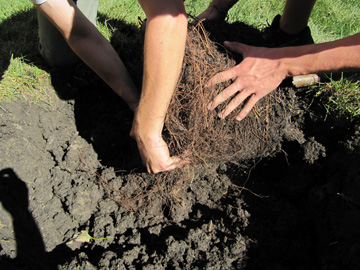
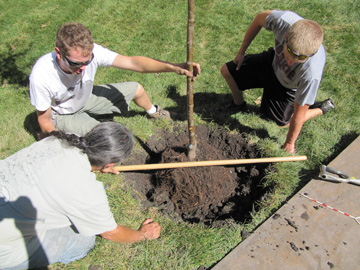
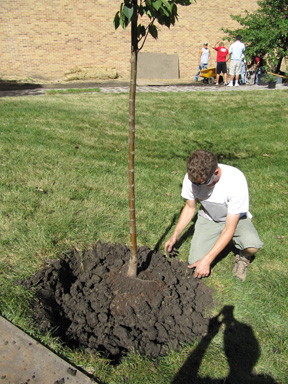
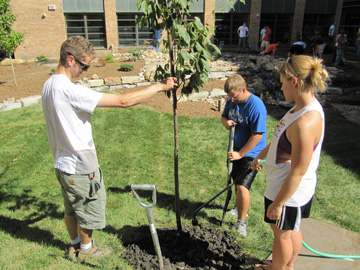
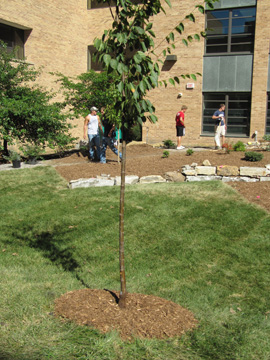
SOURCES AND DOCUMENTATION
Plant Authors:
Carl Peter ThunbergKarl Peter von Thunberg, known as the Japanese Linnaeus, was a Swedish naturalist and student of the great taxonomist. A collector in South Africa as well as Japan, Thunberg was also a medical doctor and in later life served as professor of medicine and natural philosophy at the University of Uppsala. He published numerous botanical texts: Flora japonica in 1784, Prodromus plantarum in 1800, Icones plantarum japonicarum in 1805, and Flora capensis in 1813. In 1788 he began to publish his travels.
Bertil Nordenstam, Asian Journal of Natural and Applied Sciences 2:2 (June 2013)Tomitaro Makino
Tomitaro Makino ( 牧野 富太郎 April 24, 1862 — January 18, 1957) was a pioneer Japanese botanist noted for his taxonomic work. He has been called "Father of Japanese Botany." He was one of the first Japanese botanists to work extensively on classifying Japanese plants using the system developed by Linnaeus. His research resulted in documenting 50,000 specimens, many of which are represented in his Makino's Illustrated Flora of Japan. Despite having dropped out of grammar school, he would eventually attain a Doctor of Science degree, and his birthday is remembered as Botany Day in Japan.
Plant Exploration and Aquisition in Japan- "The Plant Hunters...1796-1866." Philipp Franz von Siebold in Japan
- "The First Japanese Plants for New England." Stephen A.Spongberg (Arnoldia 50 (3) 1990
-
Spongberg, S.A. 1993. "Exploration and introduction of ornamental and landscape plants from eastern Asia." p. 140-147.
In J. Janick and J.E. Simon (eds.), New Crops. Wiley, New York.
- Zelkova, An Ancient Tree: Global Status and Conservation Action , Gregor Kozlowski and Joachim Gratzfeld, 31-page definitive document withoverview and in-depth information (PDF)
- Encyclopedia of Life (EOL) Zelkova serrata page (includes overview, detailed information, and 92 images)
- Original patent for Z. serrata 'Green Vase'
- A Global Action Plan for the Conservation of Threatened Zelkova Species " by BGCI Botanic Gardens Conservation International
- Zelkova serrata in "Flora of China", eFloras.org
- Zelkova serrata in Agroforestry Database 4.0 (Orwa et al. 2009) (PDF)
- "Tree of the Year: Zelkova ," Susyn Andrews (Royal Botanic Gardens, Kew) International Dendrology Society Yearbook 1993, 11-30
Plantae
Viridaeplantae
Streptophyta
Tracheophyta
Spermatophytina
Angiospermae
Magnoliopsida
Rosanae
Rosales
Ulmaceae
Zelkova Spach
Zelkova serrata (Thunb.) Makino
